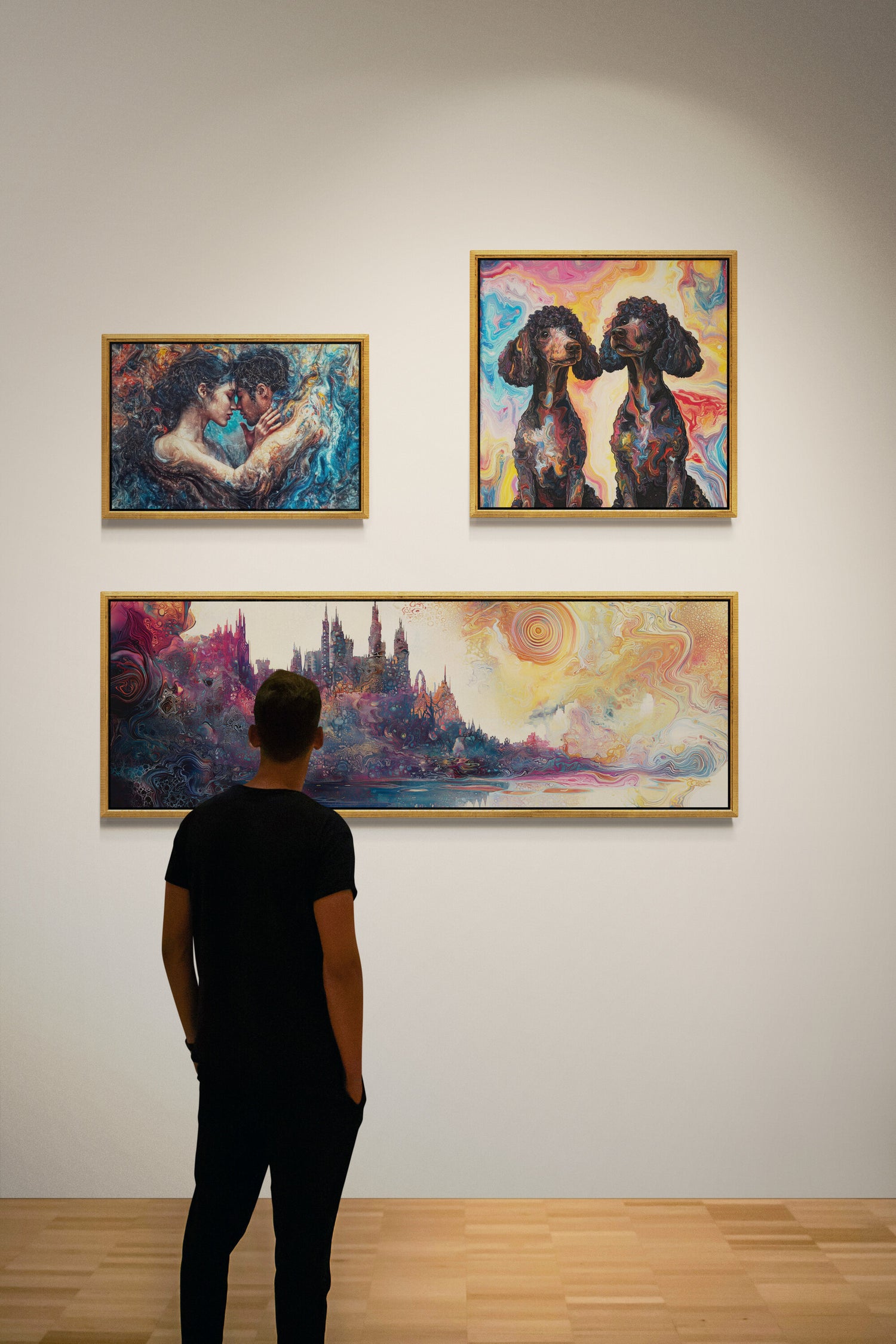
Sizes, Formats & Frames
More Than a Matter of Proportion
Of course, I could create my artworks in any format I like. But in reality, technology, logic, and economy have their say.
An online shop is not an infinite studio – every variant counts. Six sizes, six colors, three frame types, and two materials already make 216 combinations. My shop system, however, allows only 100. That’s one reason why I offer frames only on request: choice yes – overload no.
I work deliberately with three main ratios:
- 1:1, the calm and balanced square
- 2:3, the classic and harmonious rectangle
- 1:3, the panoramic view that pulls the eye into distance
Every additional ratio – like 4:3 – would only inflate the number of variants and blur the clarity I seek.
And I can’t simply stretch or crop an image without cutting away part of its essence.
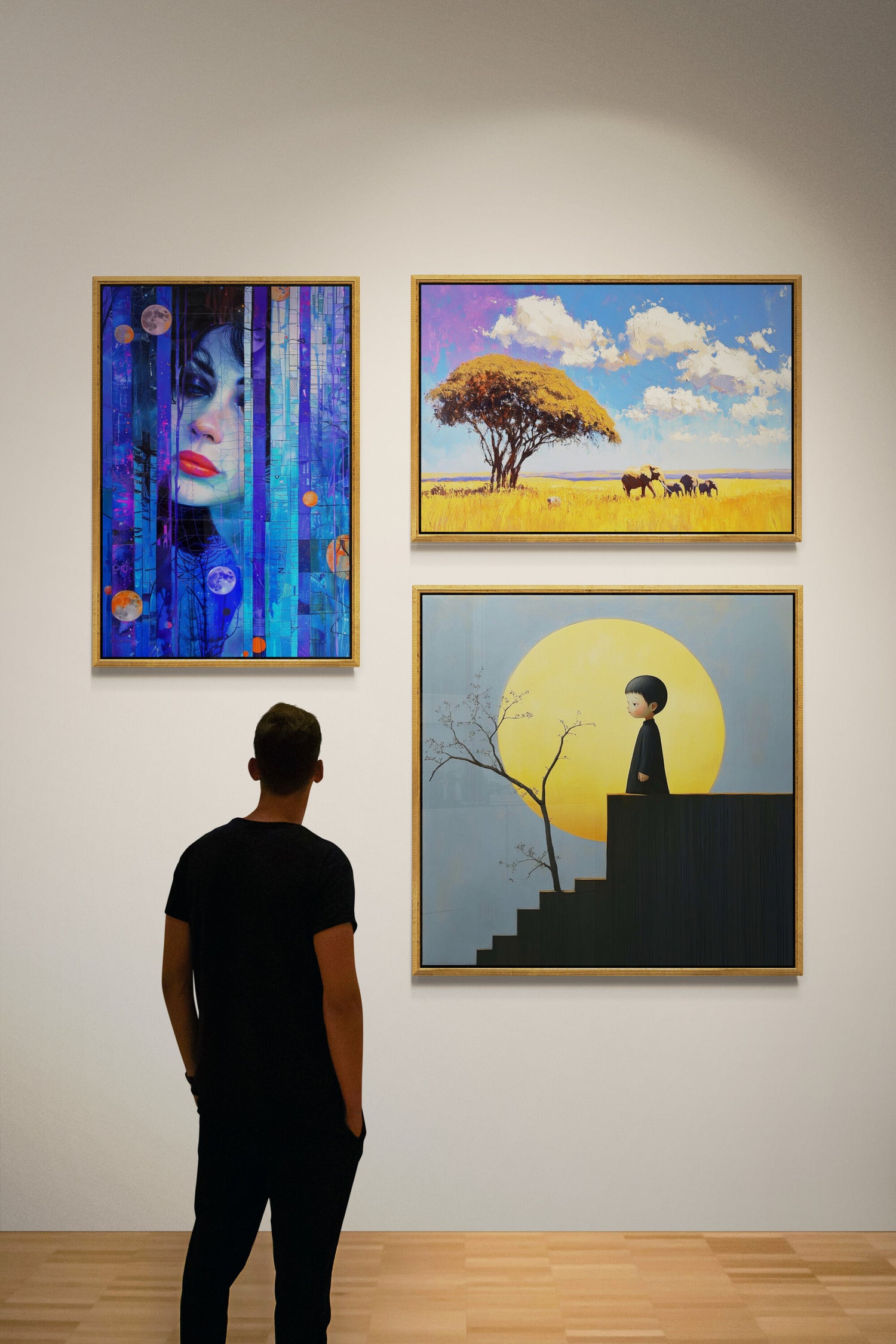
The Language of Formats
A landscape format feels grounded and calm – safe, stable, and wide.
A portrait format reaches upward, more active and alert, sometimes challenging. It can rise – or fall.
I use these effects deliberately: a work that begins as a horizontal composition may evolve into a vertical one as it grows.
And then there’s the square – serene, complete, objective.
It holds balance by its very nature, forcing focus and presence.
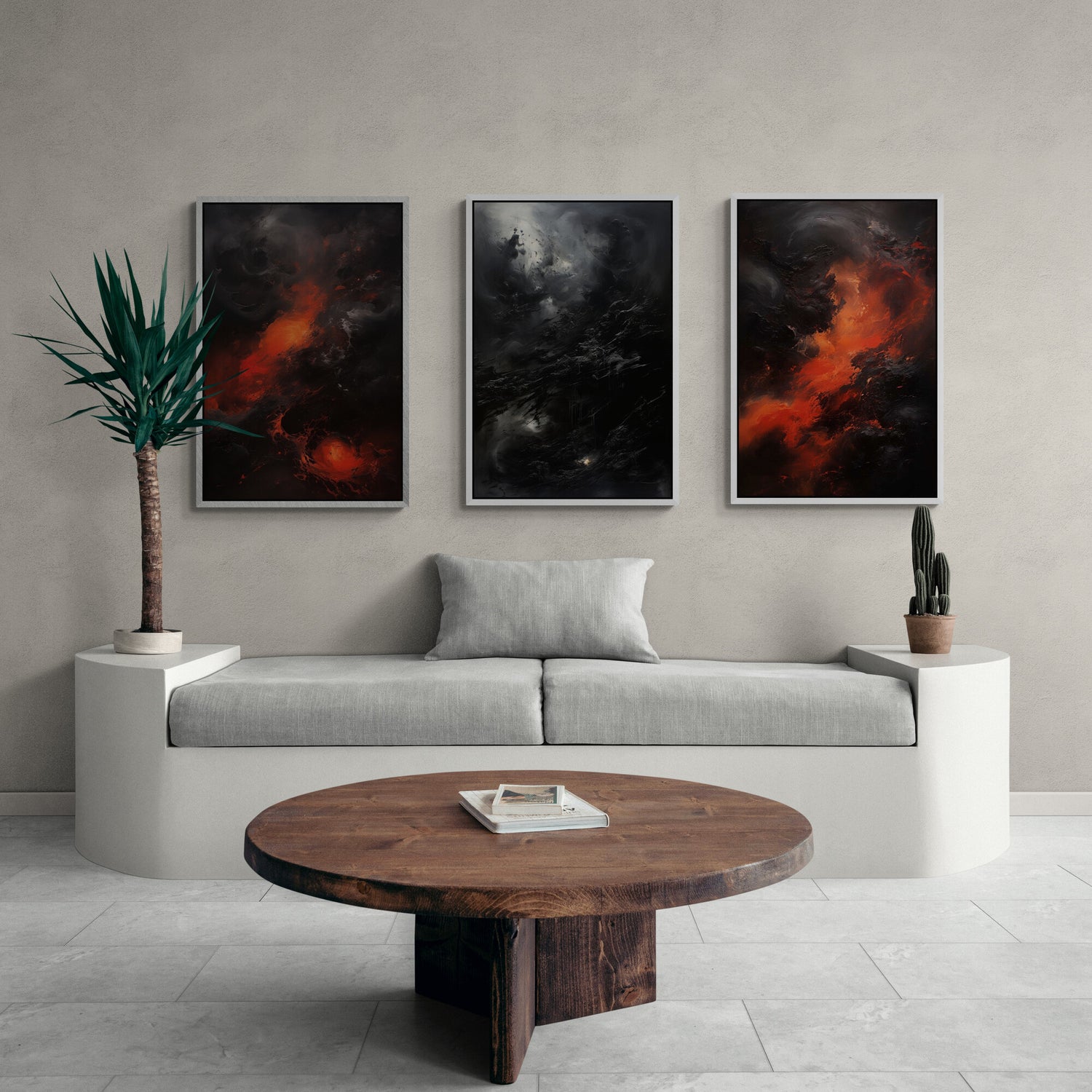
Choosing the Right Size
Size defines impact. A large artwork dominates the space and becomes its statement piece.
Personally, I tend to go large – I like art that speaks from the wall. My biggest piece, about 150×220 cm (60x87"), hangs in my living room, surrounded by others of similar scale. Together, they form a quiet dialogue.
But a gallery wall of smaller works can be just as compelling. When done right, their interplay creates rhythm and harmony – provided the theme and colors connect.
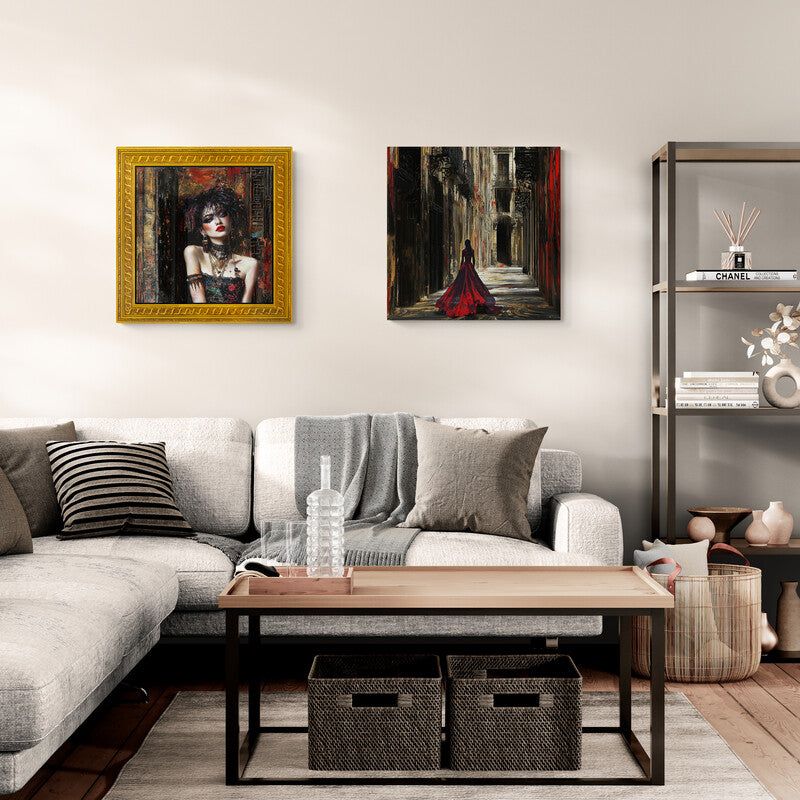
Frames – Enhancement or Distraction?
A frame can elevate a piece – or smother it. It depends on the motif, the material, and the space around it.
Paper prints always require framing; canvas prints often breathe better without it.
All artworks are also available framed, though in a standardized, minimalist style:
a box frame, about 2 cm wide, in six colors.
For paper prints, the final size equals the image size plus twice the frame width. For canvas, the artwork is stretched on a wooden frame and placed inside with a 0.7 cm shadow gap – subtle, elegant, and full of depth.
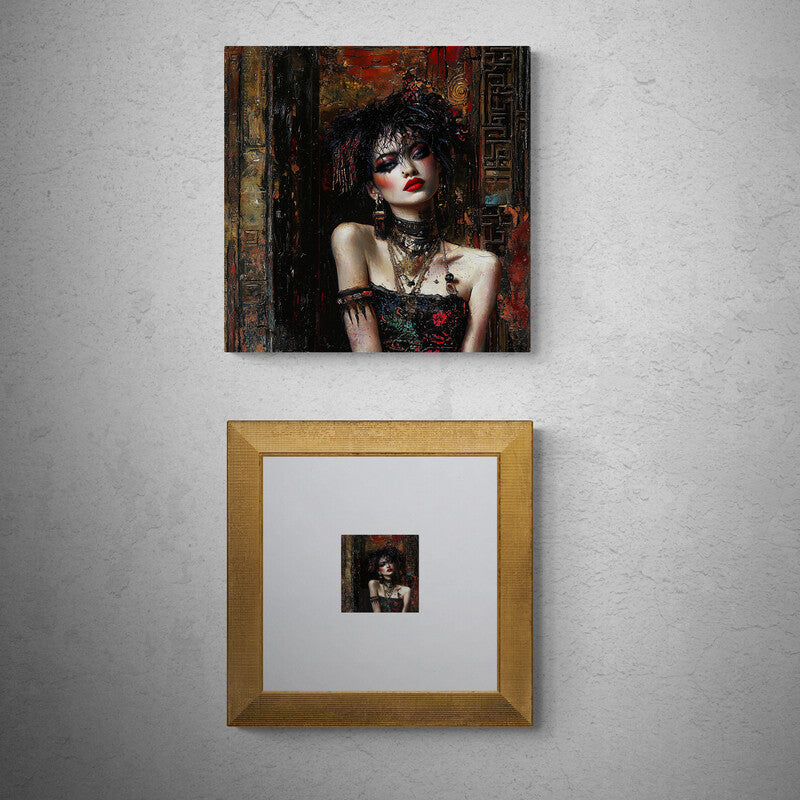
The Passepartout – A Window Into the Image
A passepartout is more than cardboard. It’s a silent mediator between artwork and frame – a cushion for the eye.
It adds distance, focus, and depth, gently guiding attention toward the work itself. Its bevelled edge creates a soft shadow line, making the image appear almost three-dimensional.
Some call it a window into the picture world – and that’s exactly what it is.
A colored mat or core can subtly echo the artwork’s tone or provide striking contrast. A good passepartout is never decoration – it’s part of the composition.
That said, we don’t offer this option in our shop.
Our manufacturer calculates based on the outer frame size and simply prints the image smaller to make space for the mat.
The result: wrong proportions.
For example, a 20×30 (8x12") cm artwork with a 3 (1.2") cm mat on each side becomes 14×24 cm (5.5x9.5").
The ratio changes from 3:2 to roughly 5:3 – a completely different visual balance.
For that reason, I prefer to leave matting and framing to your trusted local framer.
They’ll do the artwork justice.
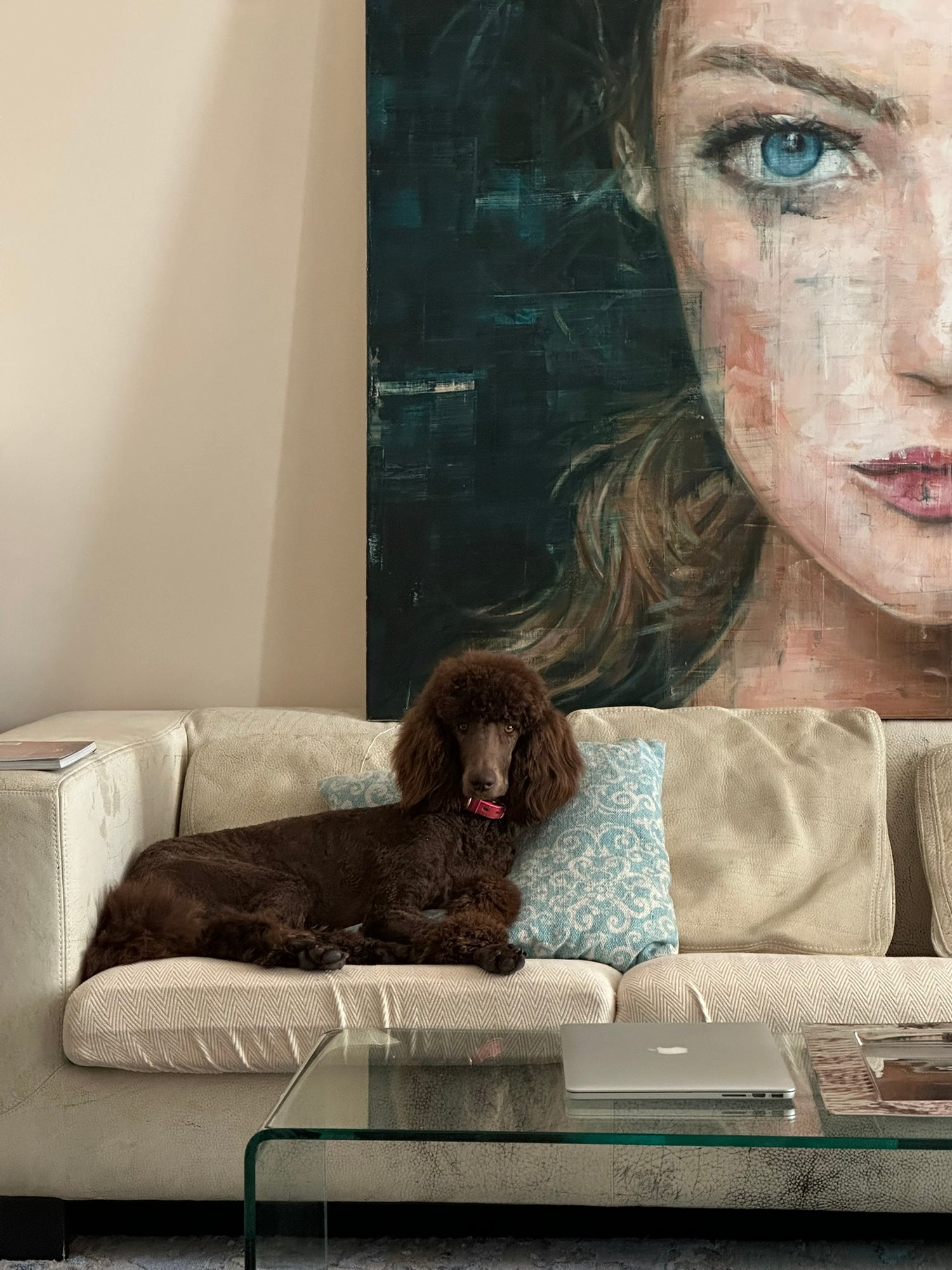
In Conclusion
I frame nearly all of my works – except the very large ones.
Most of the time, I choose the frame myself, because it completes the artwork like a period at the end of a sentence.
And yes – at my competitive prices, the frame often costs as much as the picture itself.
But then you have something on your wall that looks twice as good.
And to me, that’s worth it.
